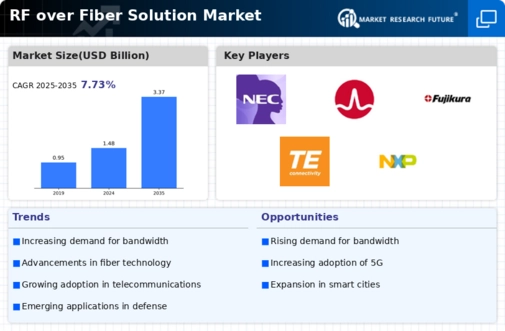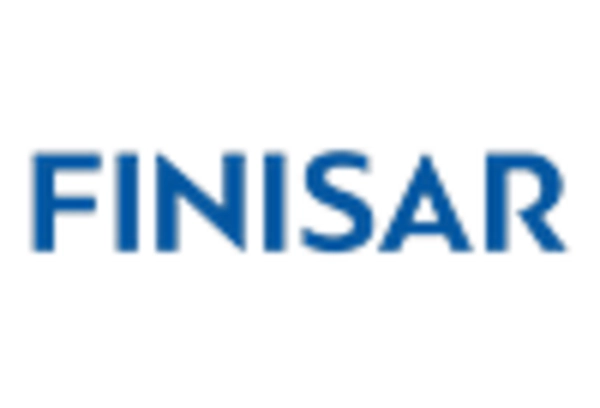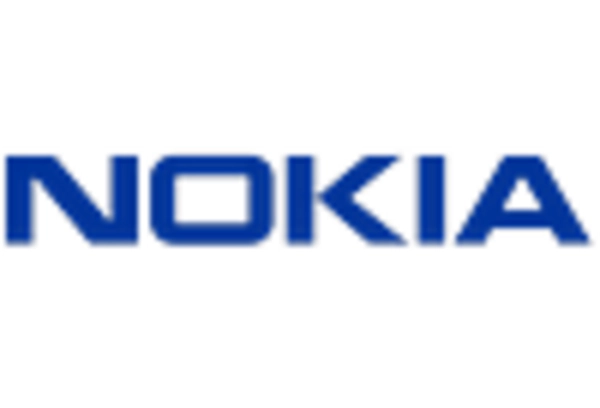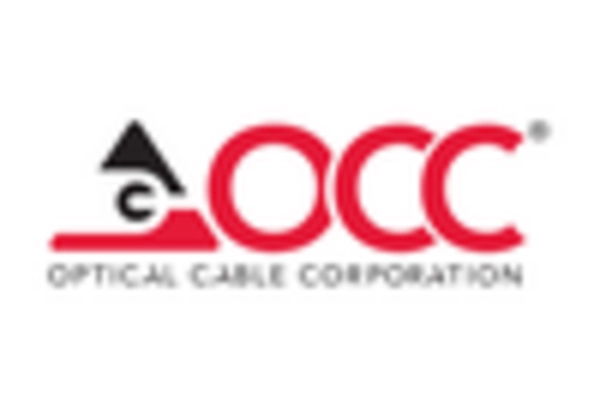Expansion of 5G Networks
The ongoing expansion of 5G networks is a critical driver for the RF over Fiber Solution Market. As telecommunications companies roll out 5G infrastructure, the demand for high-capacity backhaul solutions is intensifying. RF over Fiber solutions are well-suited to meet these demands, providing the necessary bandwidth and low latency required for 5G applications. The transition to 5G is expected to create substantial opportunities for RF over Fiber providers, with market analysts projecting that the 5G rollout could lead to a market increase of approximately 20% in the RF over Fiber sector. This growth reflects the essential role that fiber optics will play in supporting next-generation wireless technologies.
Advancements in Fiber Optic Technology
Technological advancements in fiber optics are significantly influencing the RF over Fiber Solution Market. Innovations such as improved fiber materials and enhanced signal processing techniques are enabling higher data rates and longer transmission distances. These advancements not only enhance the performance of RF over Fiber solutions but also reduce installation and maintenance costs. As a result, more industries are adopting these solutions to meet their growing communication needs. The integration of advanced technologies, such as wavelength division multiplexing (WDM), is further propelling the market forward. It is estimated that the adoption of these technologies could lead to a market growth of around 15% in the coming years, reflecting the industry's shift towards more efficient and effective communication systems.
Increased Focus on Smart City Initiatives
The RF over Fiber Solution Market is benefiting from the increased focus on smart city initiatives. As urban areas strive to enhance connectivity and improve infrastructure, RF over Fiber solutions are becoming integral to the development of smart city technologies. These solutions facilitate the deployment of advanced communication networks that support various applications, including traffic management, public safety, and environmental monitoring. The integration of RF over Fiber systems into smart city projects is expected to drive market growth, with estimates suggesting that investments in smart city technologies could exceed hundreds of billions of dollars in the next decade. This trend indicates a promising future for RF over Fiber solutions as cities evolve to meet the demands of modern living.
Growing Demand for Enhanced Communication Systems
The RF over Fiber Solution Market is experiencing a notable surge in demand for enhanced communication systems. This growth is primarily driven by the increasing need for high-speed data transmission across various sectors, including telecommunications and broadcasting. As organizations seek to upgrade their infrastructure, the RF over Fiber solutions provide a robust alternative to traditional copper systems, offering superior bandwidth and reduced signal loss. Recent data indicates that the market for RF over Fiber solutions is projected to expand at a compound annual growth rate (CAGR) of approximately 12% over the next five years. This trend suggests that businesses are increasingly recognizing the advantages of fiber optics in delivering reliable and efficient communication services.
Rising Adoption in Military and Aerospace Applications
The RF over Fiber Solution Market is witnessing increased adoption in military and aerospace applications. The unique requirements of these sectors, such as the need for secure and reliable communication systems, align well with the capabilities of RF over Fiber solutions. These systems offer advantages like immunity to electromagnetic interference and the ability to operate over long distances without degradation. As defense and aerospace organizations invest in modernizing their communication infrastructure, the demand for RF over Fiber solutions is expected to rise. Recent reports suggest that military applications alone could account for a significant portion of the market, potentially reaching a valuation of several billion dollars by 2030, underscoring the strategic importance of these technologies.
















Leave a Comment